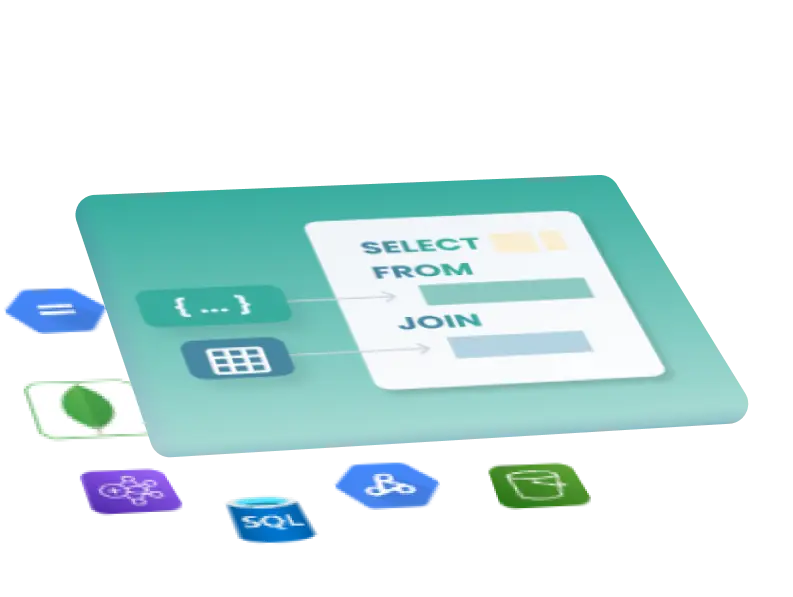The global business intelligence (BI) market is booming, powered by the pursuit of data-driven insights, with forecasts predicting its growth from $24 billion in 2021 to $43 billion by 2028.
However, the value of top-tier BI tools is negligible if the users are unable to interpret the raw data.
This underscores the significance of the semantic layer, a crucial component that ensures all users, regardless of their technical prowess, can utilize and understand enterprise information.
What does the Semantic Layer entail?
If you have ever used data in a business environment, chances are you have interacted with it through a semantic layer. This layer translates primary data into common business terminology such as customer, product, profit, etc. This translation of raw data models into familiar business language helps to achieve a unified and consistent data perspective across the organization.
The semantic layer streamlines and accelerates data access for both technical and non-technical users, enabling organizations to extract the maximum potential from their data.
What is the significance of the Semantic Layer?
Having a single source of truth (SSOT) for enterprise data is vital for generating accurate and actionable insights, which are essential for decision-making.
However, consolidating data into a central interface makes the data only accessible to a limited set of users within the company. The semantic layer plays a key role in linking your data with business applications, thereby turning the SSOT into a valuable asset for the enterprise.
Benefits of Implementing a Semantic Layer
The overwhelming majority of users neither require nor possess the skills to handle raw data to execute their work responsibilities.
Truly data-centric organizations understand the importance of bridging the gap between their business users and enterprise data, a task made possible with the semantic layer. Here are some of the benefits such organizations reap.
Improved Consistency and Collaboration
Organizations often find themselves initiating data projects from ground zero due to disparate terminologies used by different teams to refer to the same data. For instance, while Team 1 may refer to “customer”, Team 2 might use “user”. This discrepancy can lead to duplication of analysis or reporting work, resulting in a waste of time and resources.
The implementation of a semantic layer encourages inter-departmental cooperation by promoting a shared vocabulary that both business and technical users can comprehend, enabling them to collectively work towards organizational objectives.
Enhanced Self-Service
Complex data pipelines and stringent security measures often necessitate IT intervention for handling reporting requests, which can delay business users from accessing critical information for analytics. Moreover, insights hold little value if they aren’t derived from the most recent data.
Establishing a semantic layer facilitates consistency by enabling businesses to define metrics once, rather than recreating them for each application. It also amalgamates data at the time of the query, thus expediting the time to insight and allowing organizations to glean value from enterprise data as swiftly as possible.
Resource Conservation
Database administrators (DBAs), data scientists, and other IT staff are precious resources, and their expertise shouldn’t be expended on fulfilling data and report requests.
By empowering users to draw meaningful insights independently, the semantic layer contributes to the preservation of your IT resources.
Semantic Layer construction
Broadly, the following steps are involved in the creation of a semantic layer.
- Identifying business-relevant aspects within your raw data.
- Assigning business-appropriate names to fields and columns.
- Grouping logically related data from different tables.
- Replicating formulas and calculations to be applied to the business data.
The strategy for building a semantic layer varies depending on the extent of flexibility you wish to provide your users for deep-diving, experimentation, and addressing new queries.
Traditional Method
The traditional method involves the development of a simplified data model that eliminates complexities and intricacies, leaving a refined version of the original data. For instance, you would design a model that answers a specific collection of business queries along with a standard set of variations available to the user. The key limitation of this method is the difficulty in predicting the queries users may require answers to, and the inability for users to deep-dive or conduct root-cause analyses. Moreover, business users would be dealing with representative data, heightening your susceptibility to potential errors and undermining trust in the information.
Also, the traditional method doesn’t consider the evolution of business objectives, requirements, and strategies over time, which prompts the need for new queries and insights. To cater to users’ needs, you would have to redesign your data models, which can lead to delays and potential missed opportunities. These efforts accumulate, particularly in companies striving to expand their data utilization for marketing evaluation and strategic decision-making.
ApeakData’s Method
ApeakData automates the creation of a semantic layer, enabling you to offer a business-friendly perspective of the same data that your DBAs and data scientists handle.
We offer flexibility, endowing users with the auto-detect capability to amalgamate data from diverse business areas. This fosters opportunities for exploratory and root-cause analyses while paving the way for machine learning and artificial intelligence (AI) applications.
By developing a modern, scalable semantic architecture, organizations can optimize their data use, efficiently supporting a range of employee or customer-facing applications, including enterprise search, chatbots, data visualization tools, among others.





